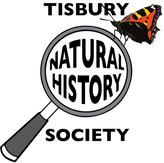|
Rebecca Twigg started her talk last week by stressing the relative unimportance of honey bees compared with wild pollinators such as solitary bees, bumblebees, moths, butterflies, hoverflies and beetles. She gave several examples of solitary bee species that are commonly found in gardens such as the Ashy and Tawny mining bees, as well as the recently arrived Ivy bees, and explained interesting details about their lifecycles and habitat requirements. Later, she gave us examples of the best garden flowers for pollinators, natives as well as exotics.
She stressed the importance of having flowers blooming all year round, with Heathers from late winter, Lungwort in early spring and continuing right through to early winter with Mahonia, for example. Rebecca explained how she restocks her garden by swapping plants, growing from cuttings and collecting seeds rather than buying from nurseries. Rebecca pointed out how planting in drifts is so important, so the bees don’t have to waste energy flying between individual flowers, making sure there’s a variety of flower types, e.g., Foxgloves for long-tongued bumblebees and daisies for short-tongued hover-flies. Rebecca then spoke about creating different habitats in gardens, to provide for the diverse requirements of different pollinators. Drilling holes between 5 and 8mm and pencil length into wooden panels, logs or posts placed in warm, sunny situations can provide valuable nesting sites for solitary bees. The importance of having areas of short and longer (flower rich) grass in a lawn to cater for mining bees, which need warm soil to complete their lifecycle, was emphasised. We recommend walking the Salisbury Bee Trail which Rebecca is responsible for laying out and for which she won an award. by Peter Shallcross Comments are closed.
|
Photo: Avocets (Izzy Fry)
The headers display photos taken by our members. Do get in touch via the Contact Form if you'd like to submit a photo for selection.
Archives
May 2024
Categories
All
|

 RSS Feed
RSS Feed